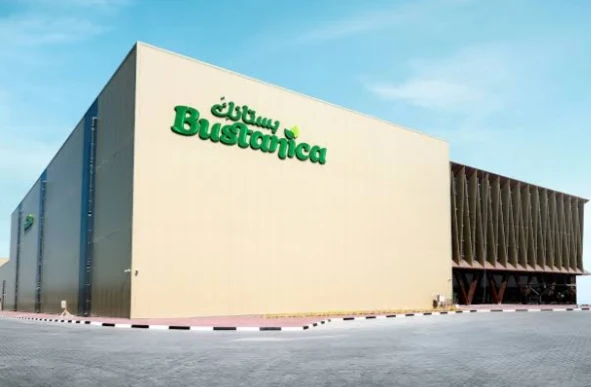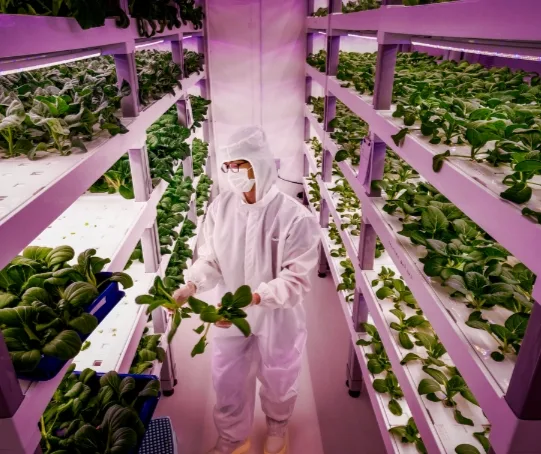Vertical farming: Sprouting skyward to feed the future
Imagine skyscrapers not just housing offices and apartments, but also bursting with fresh leafy greens, vibrant herbs, and even juicy strawberries.
This is the vision of vertical farming, a revolutionary agricultural practice that is reshaping the future of food production.
Vertical Farming Specifications: A Table Overview
Vertical farming involves cultivating plants in stacked layers, often indoors or in controlled environments. Here's a table outlining some of the key specifications and considerations:
| Specification | Considerations |
|---|---|
| Growing Medium | Hydroponics (nutrient-rich water), aeroponics (mist), or aquaponics (combining aquaculture and hydroponics) |
| Lighting | LED lights, fluorescent lights, or a combination |
| Temperature and Humidity | Controlled environment with precise regulation |
| CO2 Levels | Controlled levels to enhance photosynthesis |
| Nutrient Delivery | Precisely controlled nutrient solutions or mist |
| Water Recycling | Implement efficient water recycling systems |
| Pest and Disease Control | Implement preventative measures and monitor for pests and diseases |
| Vertical Structure | Multi-tiered racks, shelves, or containers |
| Automation | Incorporate automation for tasks like lighting, watering, and monitoring |
| Energy Efficiency | Optimize energy consumption, especially for lighting and climate control |
Growing Up, Not Out: Forget sprawling fields stretching to the horizon. Vertical farming maximizes space by stacking crops in layers, often within buildings or controlled environments. This allows for efficient utilization of land, particularly valuable in urban areas with limited space.
Tech-Powered Harvest: Sunlight is still crucial, but vertical farms often supplement it with LED lights, precisely tuned to promote optimal plant growth. Temperature, humidity, and nutrient delivery are also meticulously controlled, creating a perfect growing environment that can yield crops year-round, regardless of the weather outside.
Soilless Solutions: Ditch the dirt! Vertical farming often ditches traditional soil for soilless methods like hydroponics, where plants feed on nutrient-rich water solutions, or aeroponics, where roots dangle in mist-filled chambers. This reduces reliance on land and eliminates the need for pesticides and herbicides, promoting a more sustainable approach.
Benefits Beyond the Bunch: Vertical farming offers a bounty of advantages beyond just increased yields. Reduced water usage, minimized transportation distances, and lower carbon footprints make it an environmentally friendly alternative. Fresh, high-quality produce can be delivered directly to consumers, boosting local food security and community health.
Challenges to Contemplate: Despite its promise, vertical farming still faces hurdles. High initial setup costs, dependence on energy sources, and technical expertise requirements are key challenges. Additionally, scaling up production to meet large-scale demand remains a work in progress.
A Seed of Hope: While not a silver bullet, vertical farming offers a promising solution to a growing global challenge: feeding a burgeoning population on a planet with limited resources. As technology advances and production costs decrease, we can expect to see more vertical farms sprouting up, changing the landscape of food production and bringing fresh, sustainable food closer to consumers than ever before.
World Largest Vertical farming Projects
The Sky's the Limit: Exploring the Largest Vertical Farming Projects
Vertical farming, the innovative practice of growing crops in stacked layers within controlled environments, is rapidly scaling up. These skyward farms not only offer a glimpse into the future of food production but also stand as impressive feats of engineering and agricultural ingenuity.
Let's delve into some of the largest vertical farming projects currently pushing the boundaries:
1. Bustanica (Dubai, UAE):
Claiming the crown for the world's largest vertical farm, Bustanica in Dubai sprawls across a whopping 330,000 square feet. This behemoth utilizes cutting-edge technologies like hydroponics and LED lighting to produce over 1 million kilograms of leafy greens annually. Its impressive scale and focus on sustainability make it a true pioneer in the industry.
2. Aerofarms AgX (Abu Dhabi, UAE): ️
Aerofarms AgX in Abu Dhabi takes a different approach, focusing on research and development. This 65,000-square-foot facility serves as a testing ground for next-generation agricultural technologies, paving the way for advancements in arid and desert environments. Its contributions to pushing the boundaries of vertical farming research are invaluable.
3. Upwards Farms (Luzerne County, Pennsylvania, USA): 🇺🇸
Upwards Farms makes a statement with its unique indoor vertical farm housed within a repurposed warehouse in Pennsylvania. This 250,000-square-foot facility boasts impressive yields, producing 250 times more leafy greens per acre than traditional farming methods. Its focus on repurposing existing structures contributes to a circular economy approach.
4. Plenty Unlimited (Seattle, Washington, USA):
Taking vertical farming a step further, Plenty Unlimited in Seattle integrates fish farming with plant production. This innovative closed-loop system utilizes the waste from the fish to fertilize the plants, creating a symbiotic and resource-efficient ecosystem. Their commitment to circularity sets a new standard for sustainable food production.
5. Emirates Crop One (Dubai, UAE): ️
Another Dubai contender, Emirates Crop One, pushes the boundaries of what can be grown vertically. Their 130,000-square-foot farm successfully cultivates strawberries, a notoriously delicate fruit, alongside leafy greens. This achievement demonstrates the versatility and potential of vertical farming to tackle diverse crops.
Vertical farming Technology
Vertical Farming Technology: Cultivating Innovation in the Sky
Vertical farming, the skyward evolution of agriculture, is revolutionizing how we grow food. By stacking crops in controlled environments rather than sprawling fields, farms are pushing the boundaries of space, seasonality, and yield. But what fuels this verdant uprising?
Let's delve into the technology powering this agricultural revolution.
1. Lighting the Way: Sunlight remains crucial, but LED lights take center stage. Precisely tuned to each plant's needs, these energy-efficient lamps promote optimal growth and maximize yield, turning night into productive day.
2. Soilless Solutions: Ditch the dirt! Hydroponics and aeroponics offer a cleaner, more efficient approach. In hydroponics, roots feast on a nutrient-rich water bath, while aeroponics suspends them in a nourishing mist, eliminating the need for soil and its associated challenges.
3. Environmental Maestro: Temperature, humidity, and CO2 levels become meticulously orchestrated in vertical farms. Sensors and automated systems fine-tune these conditions, creating a personalized paradise for each crop, boosting performance and consistency.
4. Automation at its Finest: From planting and harvesting to monitoring and adjusting, robots lend a helping hand. These tireless assistants reduce labor costs, ensure uniform quality, and free human hands for research and management.
5. Data Whispers Wisdom: Sensors whisper secrets to intelligent software, collecting data on everything from plant health to environmental parameters. This real-time intelligence allows farmers to optimize conditions, predict issues, and continuously improve their craft.
These are just the tip of the technological iceberg. As research and development accelerate, we can expect even more innovations to sprout. Imagine artificial intelligence monitoring and adjusting nutrient delivery, bioprinting customized fertilizer based on a plant's genetic makeup, or robots performing delicate surgeries on precious fruits.
But like any pioneering venture, vertical farming faces challenges. High initial costs, energy demands, and technical complexities are hurdles demanding innovative solutions. Additionally, scaling up production to meet large-scale demands remains a puzzle to unlock.
However, the benefits are undeniable. Vertical farms boast incredible yields, using 95% less water than traditional farms, and minimizing transportation emissions by growing food closer to consumers. Furthermore, they offer year-round production, independent of weather whims, and provide a controlled environment that enhances food safety.
From leafy greens to juicy strawberries, vertical farms are sprouting hope around the world. With ingenuity and unwavering dedication, this technology holds the potential to nourish a growing population, redefine agricultural practices, and pave the way for a greener, more sustainable future.
So, while you may not yet see farms adorning every skyscraper, remember, the future of food is taking root, not just in fertile soil, but in the fertile minds and technology shaping vertical farming's innovative story.
Conclusion World Largest Vertical farming Projects
The world's largest vertical farming projects offer a glimpse into the future of food production, showcasing the immense potential of this innovative approach.
While each project boasts unique strengths and focuses, their collective impact highlights the exciting possibilities of growing food vertically:
1. Bustanica (Dubai, UAE): As the reigning champion of size, Bustanica demonstrates the incredible scale achievable in vertical farming. Its ability to produce over 1 million kilograms of leafy greens annually showcases the potential for high yields within controlled environments.
2. Aerofarms AgX (Abu Dhabi, UAE): Stepping beyond mere production, Aerofarms AgX positions itself as a hub for groundbreaking research and development. This focus on pushing technological boundaries paves the way for advancements that benefit the entire industry.
3. Upwards Farms (Pennsylvani,,,,,,,,,,,,a, USA): Upwards Farms champions resource efficiency by repurposing existing structures. This approach showcases the potential for integrating vertical farming into existing urban landscapes, reducing environmental impact and promoting circularity.
4. Plenty Unlimited (Seattle, USA): Embracing a circular economy, Plenty Unlimited's integration of fish farming with plant production sets a new standard for resource utilization. This closed-loop system exemplifies the innovative solutions vertical farming can offer for sustainable food production.
5. Emirates Crop One (Dubai, UAE): Pushing the boundaries of crop diversity, Emirates Crop One successfully cultivates fruits like strawberries alongside leafy greens. This achievement demonstrates the expanding range of crops that can thrive in vertical farms, increasing appeal and market reach.
In conclusion, these world-leading projects present a compelling case for the future of vertical farming.
They showcase the potential for:
- Increased food production in limited spaces: Bustanica's massive scale exemplifies the immense yields achievable.
- Advancements in agricultural technology: Aerofarms AgX's focus on research paves the way for future innovation.
- Integration with existing infrastructure: Upwards Farms illustrates the potential for repurposing buildings for urban agriculture.
- Sustainable food production: Plenty Unlimited's circular economy approach sets a new standard for resource utilization.
- Expanding crop diversity: Emirates Crop One demonstrates the potential for growing a wider range of crops vertically.
While challenges remain, these world-leading projects offer a beacon of hope for a future where food production is efficient, sustainable, and accessible to all.
The seeds of change have been sown, and as technology advances and costs decrease, we can expect to see more and more impressive feats of vertical farming sprouting up around the world, ready to nourish a growing population and build a greener future.





